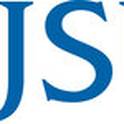
The prevalence of heel ulcers across settings is high and is increasing. Prevention of ulcers requires knowledge of their etiology and the scientific basis for preventive care. The interaction between external pressure and the heel vasculature is central to the prevention of heel ulcers. This article focuses on the prevention of heel pressure ulcers. The physiology of heel tissue perfusion, the effect of external pressure on heel perfusion, as well as what is known about strategies to reduce external pressure and approaches to improve heel skin blood flow will be discussed. It is only through understanding of the physiology of heel tissue perfusion and its relation to external pressure that effective preventive measures to reduce heel skin breakdown can be adapted in clinical practice.
Available at: http://works.bepress.com/vivian_wong/6/
